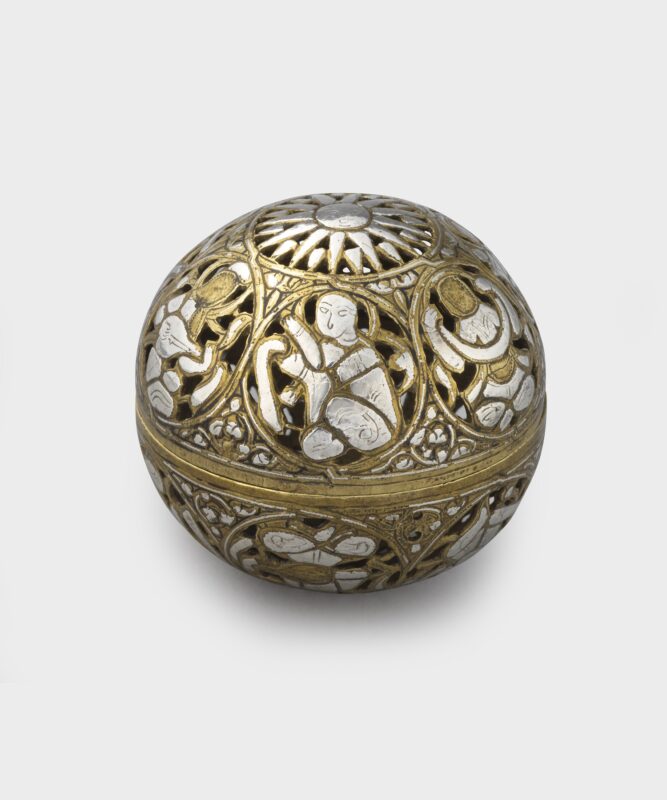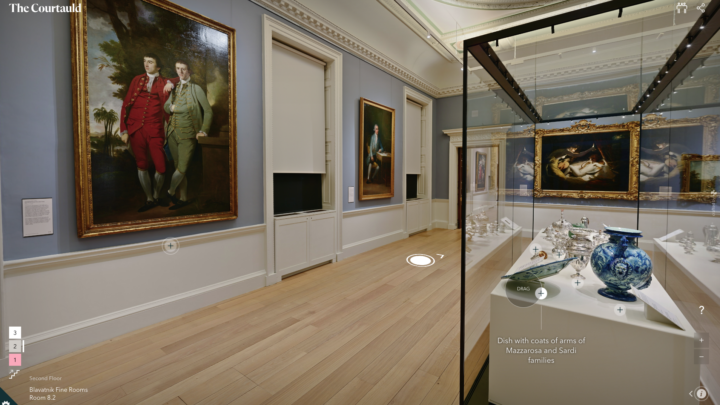
Incense Burner
Syria (Mamluk Sultanate, 1250-1517), Around 1280-90
Aromatics were prized in the medieval Islamic world for ceremonial and personal use, and finely inlaid incense burners were used by courtiers and wealthy patrons. This piece comprises interlocking hemispheres featuring the sun surrounded by personifications of the moon, Mercury, Venus, Mars, Saturn and Jupiter. References to astronomy and the related, popular practice of astrology were customary decorative themes.
Originally this incense burner contained a small central cup (gimbal) to keep the fragrance and the coal heating it level. Incense burners came in different sizes and could be suspended from chains, held in the hand, or rolled across the floor from one person to another. This is one of the earliest, and possibly the smallest, incense burners known.
Watch our short film
See this object in The Courtauld Gallery
See more collection highlights
Explore The Courtauld’s remarkable collection of paintings, prints and drawings, sculpture and decorative arts.










